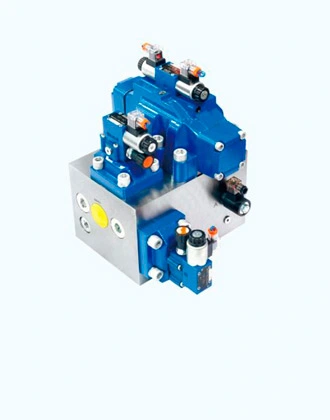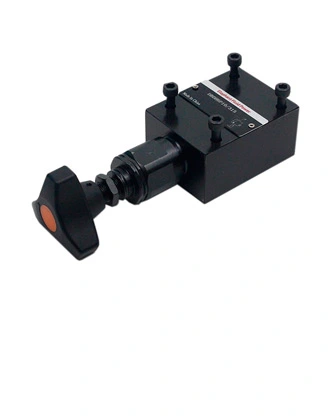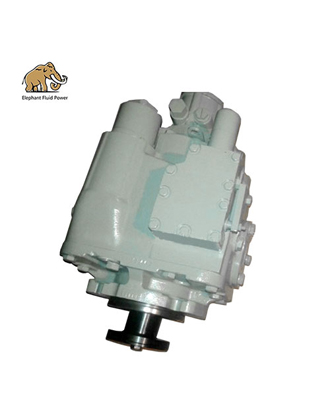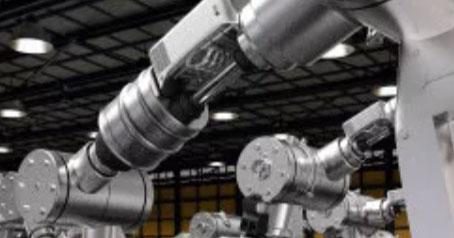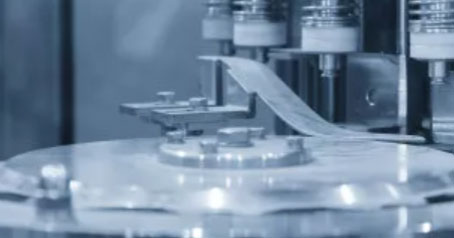The excavator main pump is the core power source of the hydraulic system, and its performance directly affects the operational efficiency and reliability of the equipment.
First, structure and working principle
Excavator main pump is mostly swash plate axial piston pump, through the drive shaft to drive the cylinder rotation, the plunger in the swash plate tilt under the action of reciprocating motion, to realize the oil suction and discharge. Take Kawasaki K3V series as an example:
Dual-pump tandem design: the front pump and rear pump share the same suction port and are connected by spline joints to achieve synchronized oil supply.
Variable control: Displacement is changed by adjusting the swashplate inclination, adapting to load changes and reducing energy consumption.
Key components:
1、Rotary mechanism: the drive shaft, cylinder body, plunger and so on form the rotary motion unit.
2、Swash plate mechanism: swash plate, servo cylinder, etc. to realize the displacement adjustment.
3, valve cover mechanism: valve block, valve plate to control the flow of oil.
Second, common types and features
1、Double pump linkage main pump
Characteristics: to realize forward, backward and other multi-action synergies, to adapt to complex working conditions.
Disadvantage: high risk of internal leakage, need to regularly check the seals.
2、Triple linkage main pump
Characteristics: support a variety of action status, convenient maintenance.
Disadvantage: poor flow balance, need to optimize the system design.
3、Single pump independent main pump
Features: simple structure, low maintenance costs, suitable for small and medium-sized excavators.
Disadvantages: unable to support multiple actions at the same time, efficiency is limited.
4、K3V/K5V main pump
Characteristics: low oil temperature, no fluid addition, low noise, widely used in modern excavators.
Advantage: significant energy saving effect, long life.
Third, maintenance and troubleshooting about hydraulic main pump
1, Daily Maintenance
Fluid management: Change hydraulic oil and filter element every 2000 hours to ensure NAS8 level cleanliness.
Seal check: check the seal ring every 500 hours to prevent leakage.
No-load operation: avoid prolonged no-load operation to prevent the pump from overheating.
2、Common faults and treatment
Pump output flow is low, pressure can not be established: check the flow distribution disk wear, plunger vice clearance.
Vibration, noise: check the bearing, gear and other rotating parts wear.
Engine overload: check whether the system pressure is too high, adjust the flow regulator.
Main hydraulic pump diagram
Excavator hydraulic pump types
 French
French
 Portuguese
Portuguese
 Russian
Russian
 German
German
 Spanish
Spanish
 Japanese
Japanese
 Korean
Korean
 Irish
Irish
 Greek
Greek
 Turkish
Turkish
 Italian
Italian
 Danish
Danish
 Romanian
Romanian
 Indonesian
Indonesian
 Czech
Czech
 Afrikaans
Afrikaans
 Swedish
Swedish
 Polish
Polish
 Basque
Basque
 Catalan
Catalan
 Esperanto
Esperanto
 Hindi
Hindi
 Lao
Lao
 Albanian
Albanian
 Amharic
Amharic
 Armenian
Armenian
 Azerbaijani
Azerbaijani
 Belarusian
Belarusian
 Bengali
Bengali
 Bosnian
Bosnian
 Bulgarian
Bulgarian
 Cebuano
Cebuano
 Chichewa
Chichewa
 Corsican
Corsican
 Croatian
Croatian
 Dutch
Dutch
 Estonian
Estonian
 Filipino
Filipino
 Finnish
Finnish
 Frisian
Frisian
 Galician
Galician
 Georgian
Georgian
 Gujarati
Gujarati
 Haitian
Haitian
 Hausa
Hausa
 Hawaiian
Hawaiian
 Hebrew
Hebrew
 Hmong
Hmong
 Hungarian
Hungarian
 Icelandic
Icelandic
 Igbo
Igbo
 Javanese
Javanese
 Kannada
Kannada
 Kazakh
Kazakh
 Khmer
Khmer
 Kurdish
Kurdish
 Kyrgyz
Kyrgyz
 Latin
Latin
 Latvian
Latvian
 Lithuanian
Lithuanian
 Luxembourg
Luxembourg
 Macedoniar
Macedoniar
 Malagasy
Malagasy
 Malay
Malay
 Malayalam
Malayalam
 Maltese
Maltese
 Maori
Maori
 Marathi
Marathi
 Mongolian
Mongolian
 Burmese
Burmese
 Nepali
Nepali
 Norwegian
Norwegian
 Pashto
Pashto
 Persian
Persian
 Punjabi
Punjabi
 Serbian
Serbian
 Sesotho
Sesotho
 Sinhala
Sinhala
 Slovak
Slovak
 Slovenian
Slovenian
 Somali
Somali
 Samoan
Samoan
 Scots Gaelic
Scots Gaelic
 Shona
Shona
 Sindhi
Sindhi
 Sundanese
Sundanese
 Swahili
Swahili
 Tajik
Tajik
 Tamil
Tamil
 Telugu
Telugu
 Thai
Thai
 Ukrainian
Ukrainian
 Urdu
Urdu
 Uzbek
Uzbek
 Vietnamese
Vietnamese
 Welsh
Welsh
 Xhosa
Xhosa
 Yiddish
Yiddish
 Yoruba
Yoruba
 Zulu
Zulu

